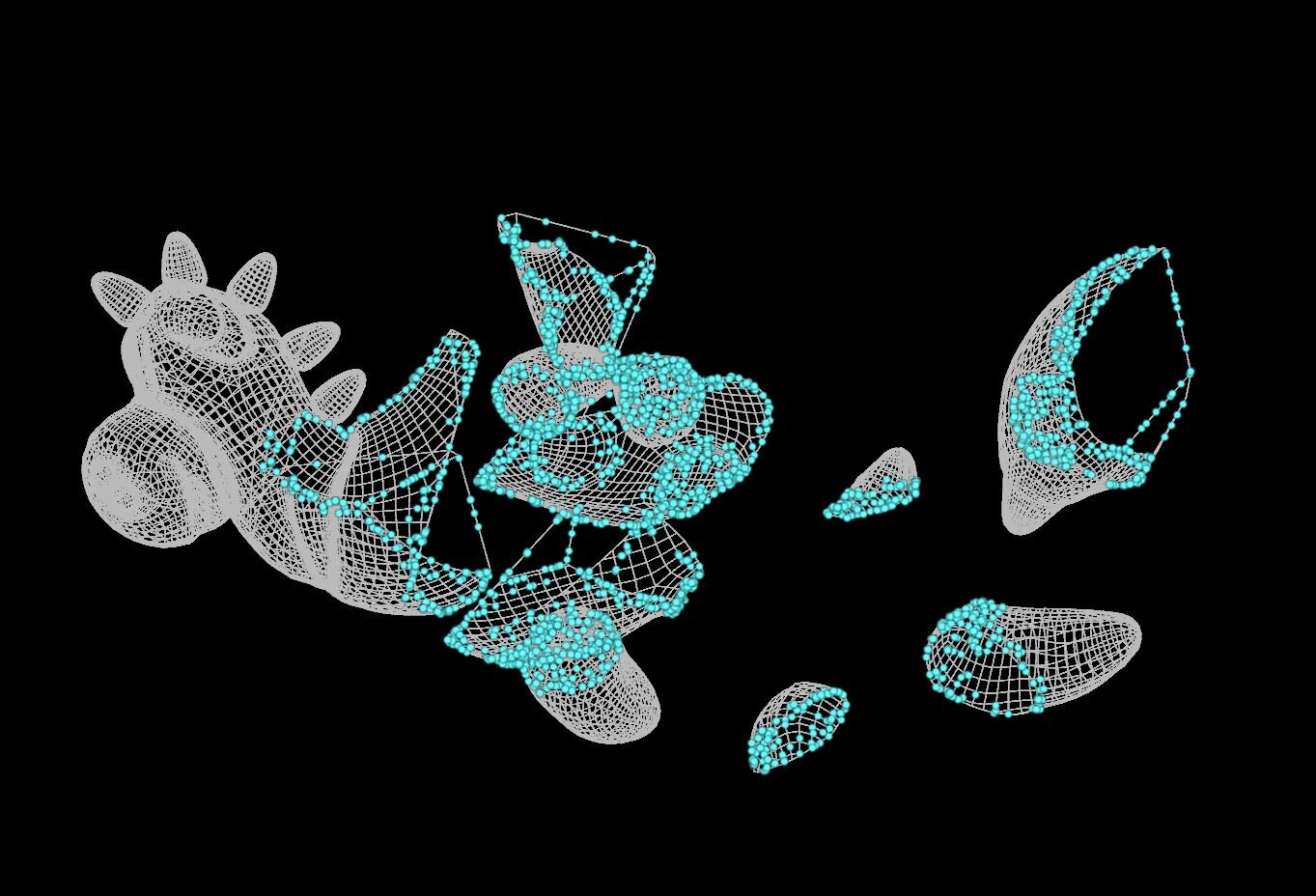Crystal Renders, Fracturing by Material Type with RBD Tools in Houdini
Fracture a geometry, add interior noise displacement using RBD Tools, and material blending in Redshift.
RBD Connected & Disconnected Face Nodes in Houdini
Have you ever tried rendering a transparent material that is fractured? How about rendering a fractured geometry before it breaks? This becomes an issue when rendering a destruction simulation with glass-like material, because the geometry looks broken before it actually breaks. This article describes briefly how in the video tutorial these issues are solved.
Tearing & Deforming Metal (RBD Tools in Houdini)
The RBD Tools redefine the workflow and simplified how the physical attributes are created and how easily it is to create and customize constraints. Break and switch constraints is super awesome feature and all this power with a click of a mouse. It’s starting to feel like cheating.
Destruction Dust Pyro (Shelf Tool)
Here we demonstrate how to add dust pyro to the a previous Destruction scene that already contained Debri Particles to exaggerate the collision impact. Here we reuse the Debri Source points and convert it into a volume.
Destruction Debri Particles (Shelf Tool)
I demonstrate how to use the Shatter tool, RBD Glued Objects, and Debri Shelf Tools to create a destruction scene with a few mouse clicks.
Detecting Collision on Impact
Debri Source node detects the collision impact on a fractured geometry and creates emission points that will be the source points for a particle simulation, which can be rendered as Debri particles.
Calculating the Force Vector in a Force Field to Influence Destruction SIM in Houdini
Using two existing points that are used as vectors to derive a new force vector. Repeat this for every single point on a sphere geometry to create a force field that can be used to influence simulations.
Controlling when to Break Glue Constraints in Houdini
Here I demonstrate how to animate the force field to produce a delay in the destruction of a fractured wall. This is a technique I used to produce some variation in the scene of the destruction of a fractured wall structure. The resulting visual effect has a huge hole that gets blasted through the wall and slowly destroys the rest of the wall pieces as the force field grows in its animation.
Calculating the Centroid Point of Geometry
How to calculate the centroid of a geometry? Math explanation behind $CEX $CEY $CEZ Houdini expression
Coordinate Positions are Vectors
Points can be formed into vectors. By knowing one point position and the origin position, using two points, a vector can be formed. This comes super handy in Houdini once we realize this. Vector manipulation can be used to influence simulations.
Destroying Things with Force Fields in Houdini
Controlling destruction blast with additional geometry as a driver. Coding the force of the blast and augmenting the RBD (Rigid Body Dynamics) solver with custom made forces.
Basic RBD Scene Setup with Glue Constraints in Houdini
Demonstrates how to setup a simple basic RBD (rigid body dynamic) dopnet simulation scene in Houdini with glue constraints. The glue strength is adjusted to a level that withstands the gravity. This is a perfect starting point or template that can be used as a starting point before adding more complex forces.
If Block (New Updated If Block in Houdini 17) using Sop Solver Footprint
Brief explanation on how the New if block nodes work in Houdini versus the Old if block nodes.
Filtering Attributes by Value with Houdini Expressions
In this article, I explain how to filter geometry using attribute values. Houdini Expressions can be used to help debug and verify certain geometries. They help out with small tasks and can turn normal static functionality more dynamic and flexible with the use of logic.
Manually Creating Glue Constraints in Houdini
Constraints in Houdini define how a piece of geometry behave and how they move in the simulation when external forces are exerted upon them. Glue & Spring Constraints both behave differently in the simulation.
Destruction Glue Constraint in Houdini
Destruction Simulations are controlled by the way you fracture the geometry being destroyed and how the glue constraints are to be broken on impact. Check out this video, where I covered the basics of setting up a destruction simulation using glue constraints provided by the voronoi fracture and I covered some basic concepts for glue constraints, to understand some fundamentals.
Water Simulation for Flowing Rivers
FLIP Simulation for Flowing Rivers Houdini Project File example provided with a Python Script to Auto Cook & Save File Caches
Vellum Sim & RBD Sim Interactions
Having Vellum simulations work with other types of simulations can require some creativity. The multisolver didn’t work with the Vellum solver. I started tinkering with different ways to mix the Vellum solver with a simple RBD simulation setup and came up with a multiple phase workflow to create a more realistic Vellum cloth dynamics with the RBD simulation.
Normals in Geometry & Computer Graphics
Normals are vectors in computer graphics that define the exterior surface of a geometry and the direction the surface is facing. Normals may also be called “Surface Normals”, but usually are referred as “normals”, are used in 3D applications to help render the polygon on the screen by distinguishing the front and back side of each primitive.
Destruction Sim in Houdini
Destruction simulation Houdini Project example files available for download




















